

June Fourth refers to the June 3-4, 1989 Chinese government military crackdown that ended the large-scale, peaceful protests in Beijing and other cities in spring and early summer that year, brutally killing an untold number of protesters and bystanders. For decades, the Chinese government has ignored persistent citizen demands for the truth, labelling the protests at first as “counterrevolutionary riots” and, later, a “political disturbance” and, still later, the June Fourth “Incident.” As part of its ongoing campaign of enforced amnesia to erase the memory of June Fourth, the government has for decades stigmatized June Fourth victims’ families and survivors, censored information, and punished public and even private commemorations of those killed. To support the calls for truth and accountability and to help preserve the evidence accumulated by victims’ families, HRIC has built an extensive documentation archive, in text, photos, and videos. The records include stories of how the victims lived and how they died; testimonies by family members of their suppression by the authorities and their arduous efforts in locating and connecting with those who were afraid to speak up in order to provide support; and their sustained demands for truth, accountability, and compensation in the form of statements issued every year on the anniversary of June Fourth. See More
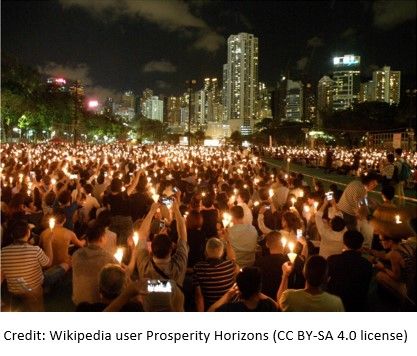
Remembering June Fourth is not a crime: What happened on June Fourth in Hong Kong 2019-2023?
August 31, 2023
Since 1989, June Fourth vigil has become a day of peaceful demonstrations in Hong Kong with thousands of Hong Kongers gathered in Victoria Park, lighting candles to commemorate the victims every year. For years, Hong Kong has been the only city on Chinese controlled soil to mark June Fourth anniversary. Hong Kong had also been holding one of the world’s largest June Fourth vigils yearly.
However, since COVID-19 hit Hong Kong in 2020, the Hong Kong government invoked social distancing measures to ban the annual candlelight vigil and weaponized a number of domestic laws, including National Security Law, Public Order Ordinance, sedition charge under Crime Ordinance, to combat June Fourth commemorations both online and offline.
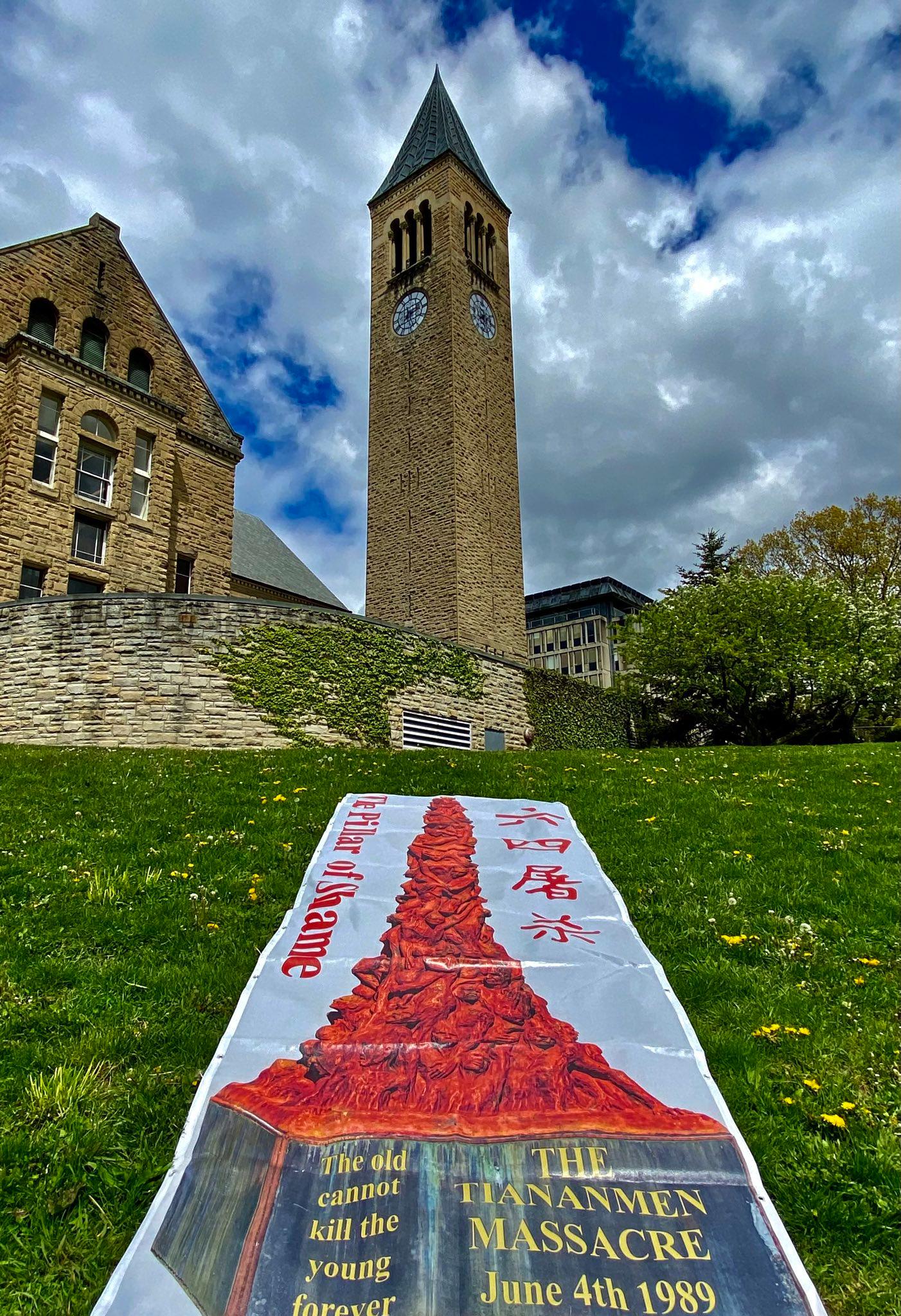
June Fourth Massacre· Pillar of Shame
On May 5 2023, a large commemorative June 4 poster based on the original Hong Kong Pillar of Shame by @Galschiot was displayed for the first time at Cornell University, by Human Rights in China Executive Director Zhou, Fengsuo and Humanitarian China board member Luo, Shengchun. On the same day, the Hong Kong police confiscated the former Hong Kong University Pillar of Shame monument built in 1997 as evidence of the so-called "subversive activities". Such a monument can be subversive because it showed history that the CCP government was guilty of killing thousands of innocent people in 1989.
At present, nearly 20 cities around the world will receive this huge commemorative poster, and there will be more displays before “June 4th.”
The Tiananmen Mothers
“As we commemorate our loved ones on this 34th anniversary of June Fourth, we honor the deceased family members here—in order to restore history, bear witness to how the victims were killed, recall the harm and suffering inflicted on the victims’ families by the troops who perpetrated the massacre, and so that people can know their misery and remember their desire and unwavering determination to defend their lawful rights and seek justice for their loved ones. Although their lives are gone, their final wishes are still with us.
On May 27, 2023, Human Rights in China released the commemorative essay on the 34th anniversary of the June Fourth Massacre. This is the full video we produced for the essay, featuring Chinese narration and English subtitles. The video is divided into 11 chapters. The time stamp of each chapter is listed in the description below the video and you can watch any chapter by clicking.
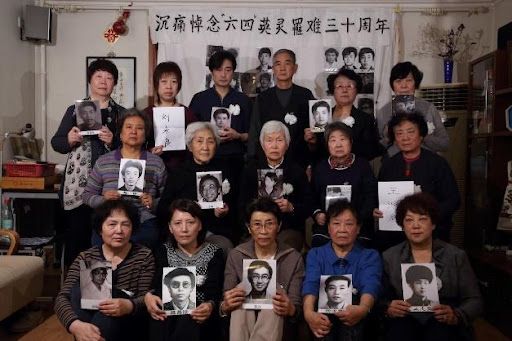
The Tiananmen Mothers is a group of survivors and families of June Fourth victims who, despite decades-long suppression and persecution by government authorities and the loss of members to time, have never given up their three demands of the Chinese government: the truth of what happened, accountability for the killing of unarmed civilians, and compensation to survivors and families of those killed. It is largely through their unflagging work that the world knows about many of the victims.
Statements:
- We Persist in Our Three Demands as Always: Truth, Compensation, and Accountability——On the 34th Anniversary of the June Fourth Massacre
- For Fairness and Justice, We Will Persevere: On the 33rd Anniversary of the June Fourth Massacre
- Our Faith and Perseverance Will Never Change: On the 32nd Anniversary of the June Fourth Massacre
- Tell the Truth, Refuse to Forget, Lies Written in Ink Cannot Conceal the Facts Written in Blood On the 31st Anniversary of the June Fourth Massacre
- Mourning Our Families and Compatriots Killed in the June Fourth Massacre: A Letter to China’s Leaders
Tiananmen Mothers Speak Out in Video Interviews
Video interviews with families of five June Fourth victims, edited by HRIC:
The story of Xiao Jie
Male, 21, student in the journalism department of Renmin University of China. Shot dead by martial law troops on June 5, 1989. From Chengdu City, Sichuan Province.
“It was from [Xiao Jie’s] will that I realized he had developed concerns for the country and people when he was little.
—Xiao Jie’s father
See his profile: https://truth30.hrichina.org/xiao_jie.html.
The story of Sun Hui
Male, 19, student in the chemistry department of Peking University. A bullet hit him in the heart in the morning of June 4, 1989. From Shijushan City, Ningxia Province.
“My child was just riding a bike on the street—and he was shot dead. During the Tiananmen Incident, our child was just a student, unarmed, and you shot him with your machine gun?
—Sun Hui’s father
See his profile: https://truth30.hrichina.org/sun_hui.html.
The story of Wu Guofeng
Male, 20, student in the department of industrial economy at Renmin University of China. Killed in the early morning of June 4, 1989 after being shot in the head and stabbed in the abdomen. From Xinjin County, Sichuan Province.
“Our child was the first one in from our tiny, isolated Sichuan county to get into Renmin University in the 40 years since liberation.
—Wu Guofeng’s father
See his profile: https://truth30.hrichina.org/wu_guofeng.html.
The story of Shi Shan
Male, 27, cellist in the Beijing Air Force Political Bureau Cultural Work Group. Shot in the head in the morning of June 4, 1989. From Dalian City, Liaoning Province.
“‘Ma, don’t worry. I know what’s going on. “When the country is in trouble, every ordinary man is responsible”’—these were the last words he said to me. [After he died,] we didn’t dare cry. We had to go to the mountains, to the seaside to cry.
—Shi Yan’s mother
See his profile: https://truth30.hrichina.org/shi_yan.html.
The story of Liu Hongtao
Male, 18, undergraduate student in the optical engineering department of the Beijing Institute of Technology. Shot in both legs in the early morning of June 4, 1989; died at a Beijing hospital where doctors were ordered not to treat him. From Wuhan City, Hubei Province.
“He wrote me and said: ‘If everyone waited for others to make a revolution and just enjoyed its fruit, what could be achieved?’
—Liu Hongtao’s father
See his profile: https://truth30.hrichina.org/liu_hongtao.html.
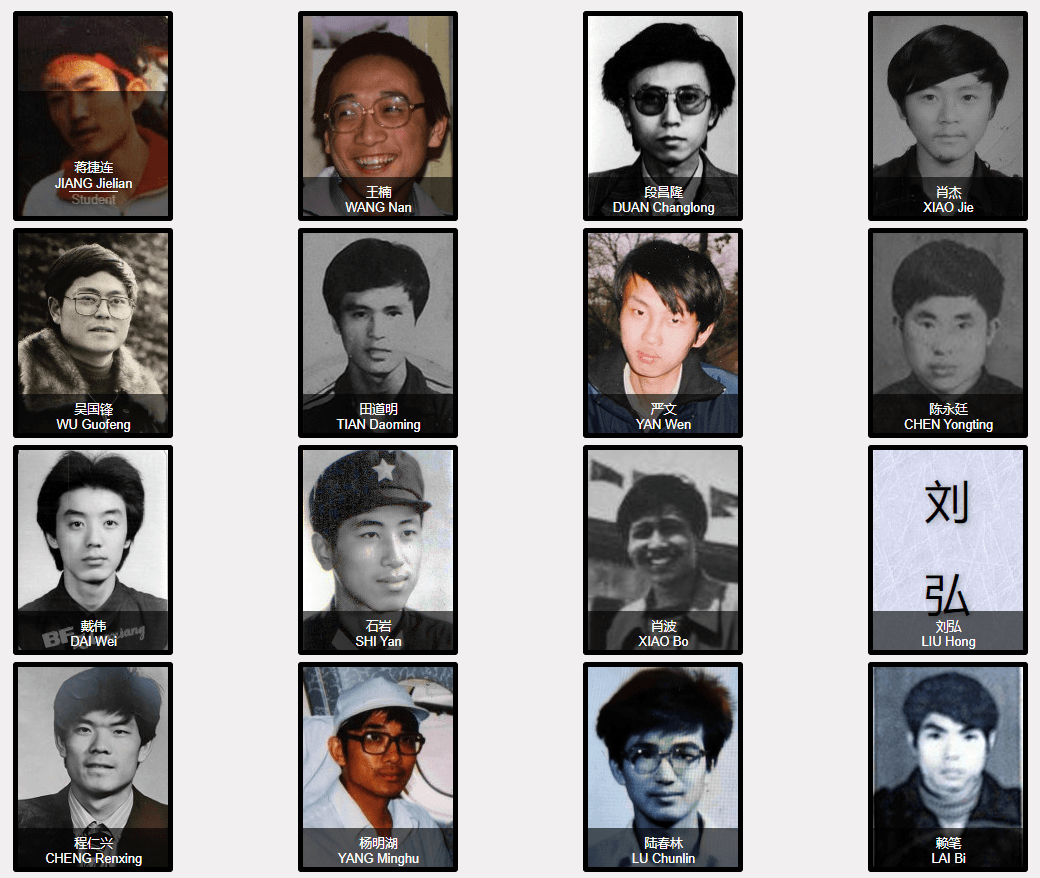
Stories of more than 80 June Fourth victims—how they lived and how they died—as told by their families and in their own words. The stories tell us that the young university students driven by their wish for a better future for China and their sense of duty as citizens to speak out were true patriots. Some of them, from impoverished backgrounds, were the hope of their families for a better future. “Unforgotten” seeks to honor the lives of the fallen and generate international support for the sustained demands by survivors and families of victims for truth, accountability, and compensation.
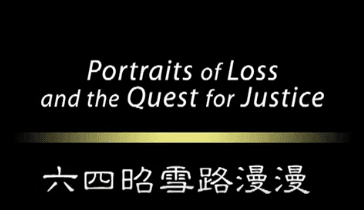
Produced by HRIC with footage shot by the Tiananmen Mothers, Portraits of Loss and the Quest for Justice presents the stories of six victims as told by their family members, and of two survivors as told by themselves.
Premiered June 3, 2009 at Asia Society, New York. Subsequent screenings included those held at a European Parliament Subcommittee for Human Rights side event (Brussels, 2012), the Foreign Correspondents’ Club (Hong Kong, 2011), the 37th FIDH Congress (Yerevan, 2010), and public events in Paris and Geneva.
“Will the Verdict on June Fourth Ever be Reversed?”
Interview with Professor Andrew Nathan, Co-Editor of The Tiananmen Papers, June 2022
“When the day comes . . . that the Party reaches its own dead end and confronts a crisis and has to again make the choice between liberalization and dictatorship and decides to go the road of liberalization, then that will lead eventually to an opening up of history, of all of PRC history, and all of Chinese history to independent inquiry.
“China’s Democratization—an Unavoidable Issue”
Interview with Zhou Fengsuo, democracy activist and 1989 Tiananmen student leader, June 2022
“[China’s] trajectory was fixed when the tanks rolled onto Tiananmen Square and killed innocent protesters. . . . And the way to fight back is to confront it.
“We are not going to forget what happened in 1989”
Interview with Hong Kong activist Alex Chow, June 2022
“They want us to forget. We have to fight back and keep commemorating what happened . . . . [We must] muster our energy and our determination so that we could come together as a stronger force.
These rare photos of the 1989 Democracy Movement in Beijing and its aftermath from the HRIC archive include: crowds mourning the death of reformist CPC leader Hu Yaobang at the Monument to the People's Heroes that marked the beginning of the Tiananmen protests; a column of teachers on bicycles with a banner saluting the students; a trunkful of exuberant volunteers delivering water to students; the Goddess of Democracy in construction; students on hunger strike; hotel workers displaying a banner announcing their arrival in the Square; policemen reaching to shake the hands of students; a policeman holding up a sign that says “The Students Will Prevail”; and Tiananmen Square after the military crackdown
(Courtesy of Gail Butler, Libby Schmalz.)

This brief chronology begins on April 15, 1989, when the death of Hu Yaobang, the reformist General Secretary of the Communist Party of China, triggered what would become a large-scale protest centered in Tiananmen Square. It covers the milestones of the Democracy Movement and the crackdown and ends on January 11, 1990, when martial law was lifted in Beijing.